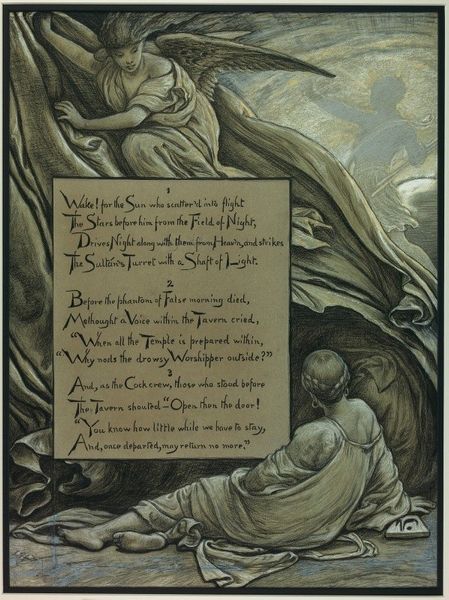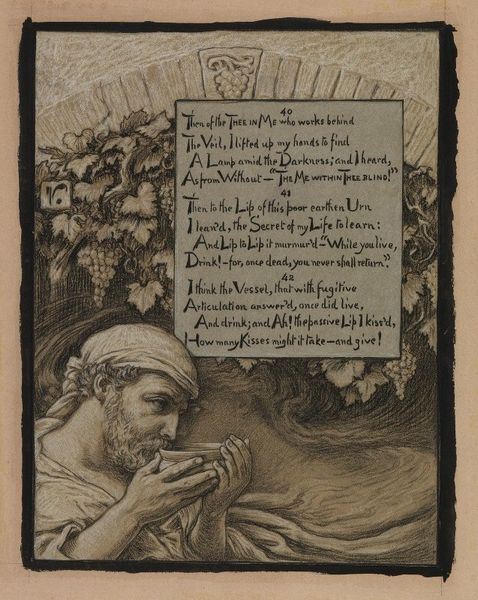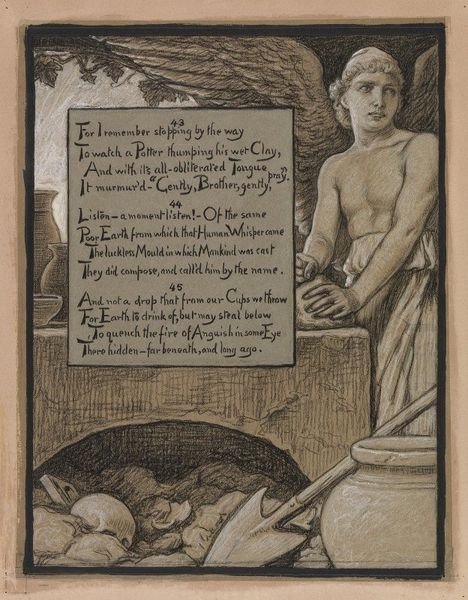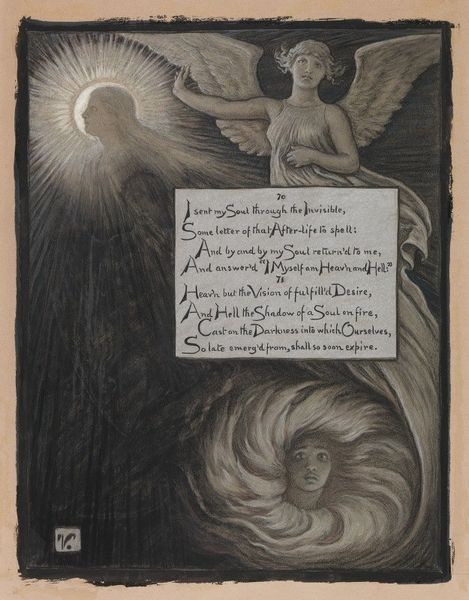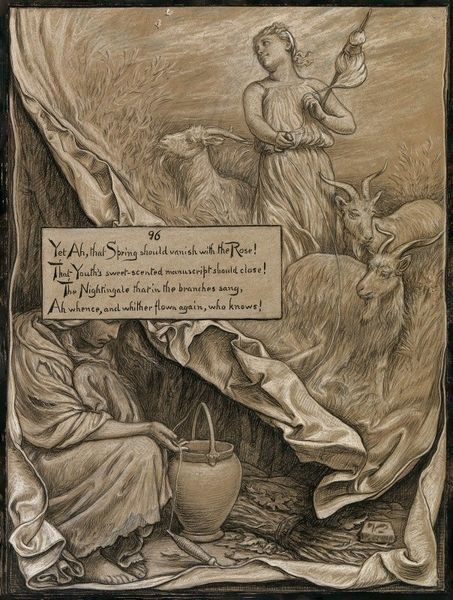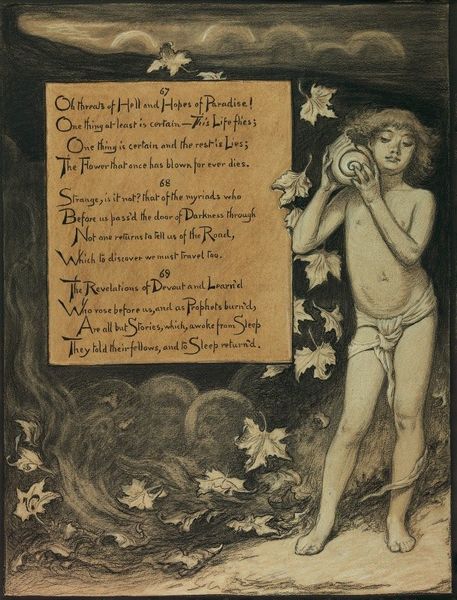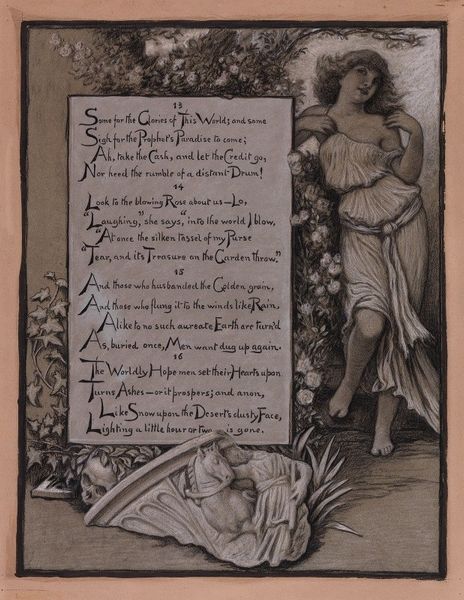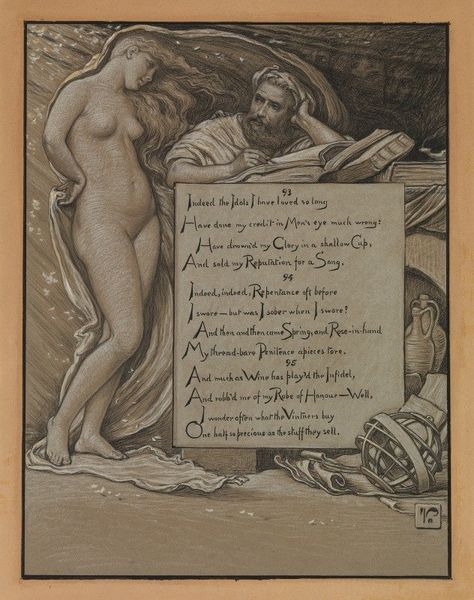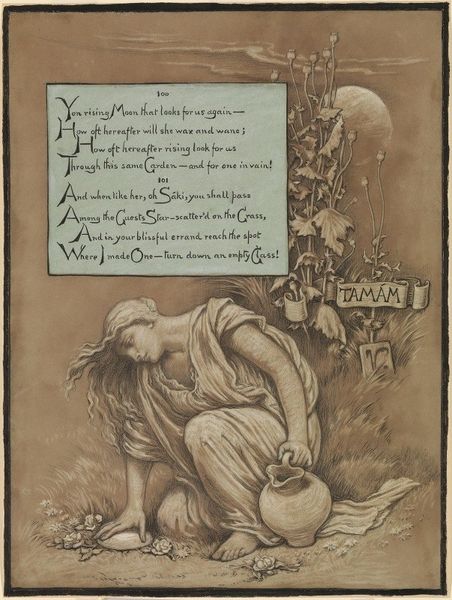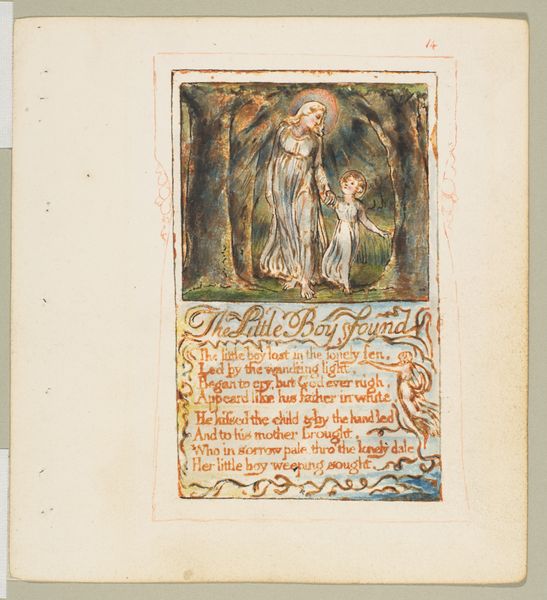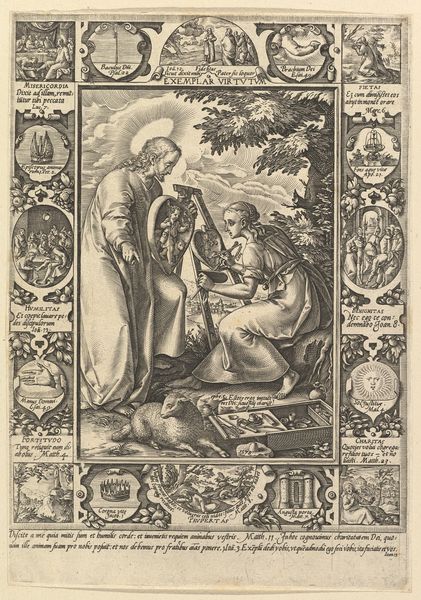
#
aged paper
#
toned paper
#
sketch book
#
tea stained
#
personal sketchbook
#
coloured pencil
#
ink colored
#
watercolour illustration
#
sketchbook art
#
watercolor
Copyright: Public Domain: Artvee
Curator: Standing before us is “The Sorry Scheme,” a work on paper created by Elihu Vedder between 1883 and 1884, executed in watercolor and colored pencil. Editor: It strikes me immediately as a visual poem, very melancholic, with its muted palette and the somber expressions on the figures. Almost theatrical. Curator: Indeed, the central image involves an aged, bearded figure cradling a winged youth, perhaps an angel. Vedder, known for his symbolist leanings, often explored themes of fate, mortality, and the human condition. Editor: And you can really see that in the inclusion of the written passage too; it gives the work such layered social context. The hand-written text is really integral. Is there any significance to its placement alongside the figures? Curator: Absolutely. The text laments the human desire to alter fate, to "grasp this sorry Scheme of things entire." Notice also the wounded dove at the base, a classical symbol of peace, but here signifying loss or perhaps a shattered hope. Editor: The dove really enhances that theme, especially being rendered with such… lack of ceremony? What is this “sorry scheme” he’s talking about, specifically? What were Vedder's influences? Curator: Vedder was immersed in literary and artistic circles that grappled with existential questions and drew from Romantic and Pre-Raphaelite sensibilities. His symbolic vocabulary often references classical mythology and biblical themes. This "scheme," I believe, alludes to the human construct of fate and its perceived flaws, our desperate urge to control things that are perhaps beyond our reach. Editor: It is all rather loaded with this kind of post-Romantic melancholy isn't it. Almost weighed down with meaning in a way that reflects his milieu. The composition creates this sense of inevitable sadness, of a heavy history and inherited trauma being gently laid bare. Curator: Yes, exactly. I find it speaks to the cyclical nature of longing and disappointment, using symbolic language accessible in his time, yet resonant with contemporary viewers. Editor: Looking closely I can now see what makes it so successful; this potent convergence between literary imagery and deeply vulnerable human sentiments. Thank you. Curator: A perfect culmination, blending introspection with broader human concerns about destiny and peace.
Comments
No comments
Be the first to comment and join the conversation on the ultimate creative platform.
